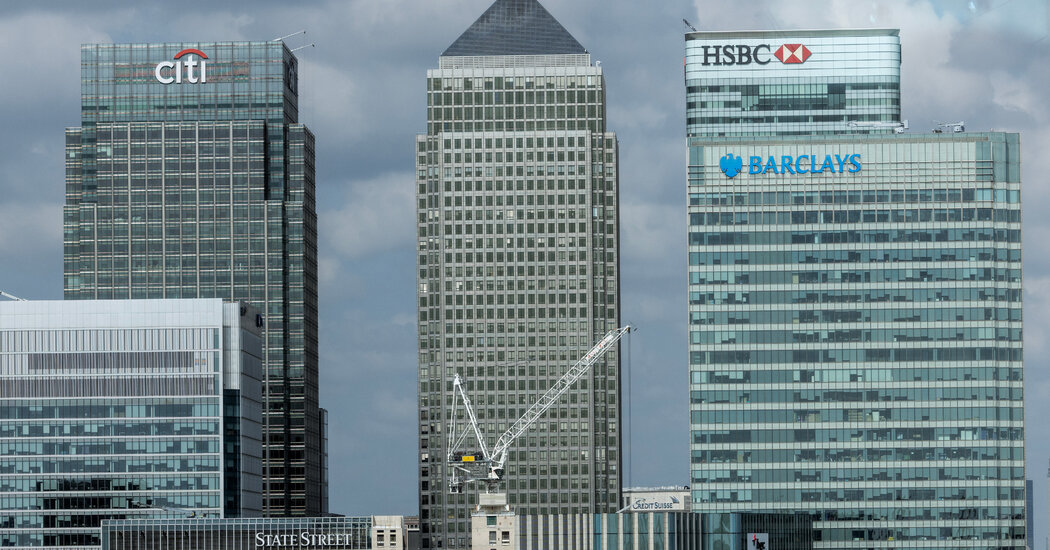The arduous, decades-long process of ending the financial system’s dependence on a battered interest rate benchmark that once underpinned trillions of dollars in contracts around the world is almost over. As of next week, the so-called London Interbank Offered Rate, LIBOR for short, will no longer be published.
LIBOR is a collective term for dozens of interest rates denominated in different currencies and intended to reflect how much it costs banks to lend each other money. This rate is important because it reflects the base cost that banks pass on to customers. The ups and downs of LIBOR have been reflected in many mortgages, student loans, corporate bonds and a variety of financial derivatives for more than 50 years.
In 2012, British bank Barclays became the first of many to be fined by regulators for manipulating LIBOR. LIBOR was determined by averaging the interest rates of a relatively small group of banks on a daily basis. The submissions were intended to reflect market conditions, but since they were not explicitly linked to actual trading, submitters have been accused of tricking the system by offering higher or lower rates to favor certain trades. In the end, around $10 billion in fines were slapped across the financial industry over allegations of LIBOR manipulation, prompting efforts to move away from the flawed benchmark.
This week, that mammoth task reaches the finish line.
“LIBOR was a ubiquitous interest rate for all global financial products; It was the most important benchmark in the world and it was a truly Herculean effort to get the market off it,” said Mark Cabana, head of US rates strategy at Bank of America. “There are still issues, but it is worth noting that LIBOR will go out with a whimper rather than a bang. That was unthinkable years ago.”
In the United States, LIBOR is being replaced by the Secured Overnight Financing Rate (SOFR). Unlike LIBOR, SOFR represents the cost of borrowing to a broader range of market participants and is based on actual transactions in overnight credit markets.
The process of replacing LIBOR began in 2014 with the formation of the Alternative Reference Rates Committee, a group of industry representatives and regulators who decided in 2017 to replace LIBOR with SOFR. Since then, a mammoth task has taken place to inform banks, fund managers and others of the transition and get them to convert their contracts to the new interest rate. From 2022, new deals should no longer be linked to LIBOR.
But many contracts written before and even some after still quote the LIBOR benchmark and last minute attempts were made to meet this week’s deadline.
For example, according to JPMorgan Chase, about half of the $1.4 trillion lending market has switched to paying interest linked to SOFR. Most of the rest of the market has adopted wording in loan documents that says loans still pegged to LIBOR will switch to SOFR next week.
“It’s been a tremendous amount of work,” said Meredith Coffey, who has been part of the transition effort since 2017 as co-lead policy at the Loan Syndications and Trading Association. “When we started talking to people in the spot markets and telling them LIBOR was going to end, they thought we were crazy.”
A small portion of the lending market — about 8 percent, or about $100 billion — has no fallback language, according to data from research firm Covenant Review. Most of these loans come from riskier borrowers who are struggling to refinance their debt to access SOFR.
Analysts said most of these companies could benefit from the decision by UK regulators, which oversee LIBOR, this year to publish a rate that tracks LIBOR by September 2024. This zombie-like interest rate is designed to avoid market disruptions after the deadline.
Still, a small number of companies could be forced to use the so-called prime rate, which reflects the cost consumers incur to borrow from commercial banks – a much higher rate than the rate banks charge each other. With some borrowers already caved in to the Federal Reserve’s sharp rate hike last year, the move to the federal funds rate could have serious consequences, rating agency Fitch warned.
“It was a colossal shift,” said Tal Reback, a director at investment firm KKR and a member of the industry committee leading the transition away from LIBOR. “It was a reconfiguration of global financial markets, accompanied by a global pandemic, extreme inflation and rising interest rates. There will be growing pains, but by all accounts it’s time to say, ‘Rest in Peace LIBOR.’”

